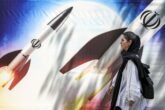July 23, 2018
The Fall of Daraa
Why Syria's Rebels Continue to Fight Assad
On July 6, after more than two weeks of hard fighting, forces loyal to Syrian President Bashar al-Assad stood triumphant at the Nasib gate. The gate, which lies on the Jordanian-Syrian border on the edge of Syria’s southwestern Daraa province, controls the highway leading from Amman to Damascus; its seizure by anti-government rebels in April 2015 had been a serious blow to Assad. Now, with the government’s recapture of the Nasib gate, Daraa—the rebel stronghold where the uprising that sparked the country’s civil war began—lay open to Damascus. A little more than a week after Nasib’s fall, the city of Daraa agreed to surrender to Assad. For southwestern Syria’s opposition, things weren’t supposed to end this way.
Rebels in Daraa once had high hopes for defeating Assad. In mid-2015, on the heels of major rebel advances throughout Syria, Daraa’s armed opposition was convinced that it could expel the regime from its corner of the country. In June of that year, forces led by the Southern Front of the Free Syrian Army (FSA) launched an offensive, dubbed Southern Storm, to evict the regime from the province’s capital city, also called Daraa. Although trumpeted by Syria watchers, Southern Storm garnered little in the way of attention from the international media and barely any support from the opposition’s main foreign backers, Jordan and the United States. And despite initial advances, the rebels failed to take the city. Within a month the offensive had ground to a halt—a de facto defeat for the opposition.
After the failure of Southern Storm, the battle for southwestern Syria—including the provinces of Daraa, Quneitra, and opposition-held areas of Sweida—settled into a stalemate. Neither Assad nor the opposition could make major gains, although Russia’s September 2015 military intervention on behalf of the regime made it nearly impossible for the rebels to win by military means. Although they did not know it at the time, Southern Storm had been the last, best hope for the rebels in Daraa.
Read the Full Article at Foreign Affairs
More from CNAS
-
Sharper: Iran and the Axis of Upheaval
Despite suffering geopolitical setbacks since Hamas’s October 7 attacks on Israel, a potentially nuclear Iran continues to pose a significant threat to U.S. and allied interes...
By Delaney Soliday & Charles Horn
-
Ziemba: Trump, Gaza Plan Unlikely to Come to Fruition
Rachel Ziemba, an Adjunct Senior Fellow at the Center for a New American Security (CNAS), discusses Donald Trump's proposal that the US should take control of the devastated G...
By Rachel Ziemba
-
Sharper: Trump's First 100 Days
Donald Trump takes office in a complex and volatile global environment. Rising tensions with China, the continued war in Ukraine, and instability in the Middle East all pose s...
By Charles Horn
-
Convene the E3 to Address the Iranian Nuclear Threat
In its first 100 days, the Trump administration should convene the United Kingdom (UK), France, and Germany—the E3—to coordinate a strategy for dealing with Iran’s nuclear pro...
By Jonathan Lord




